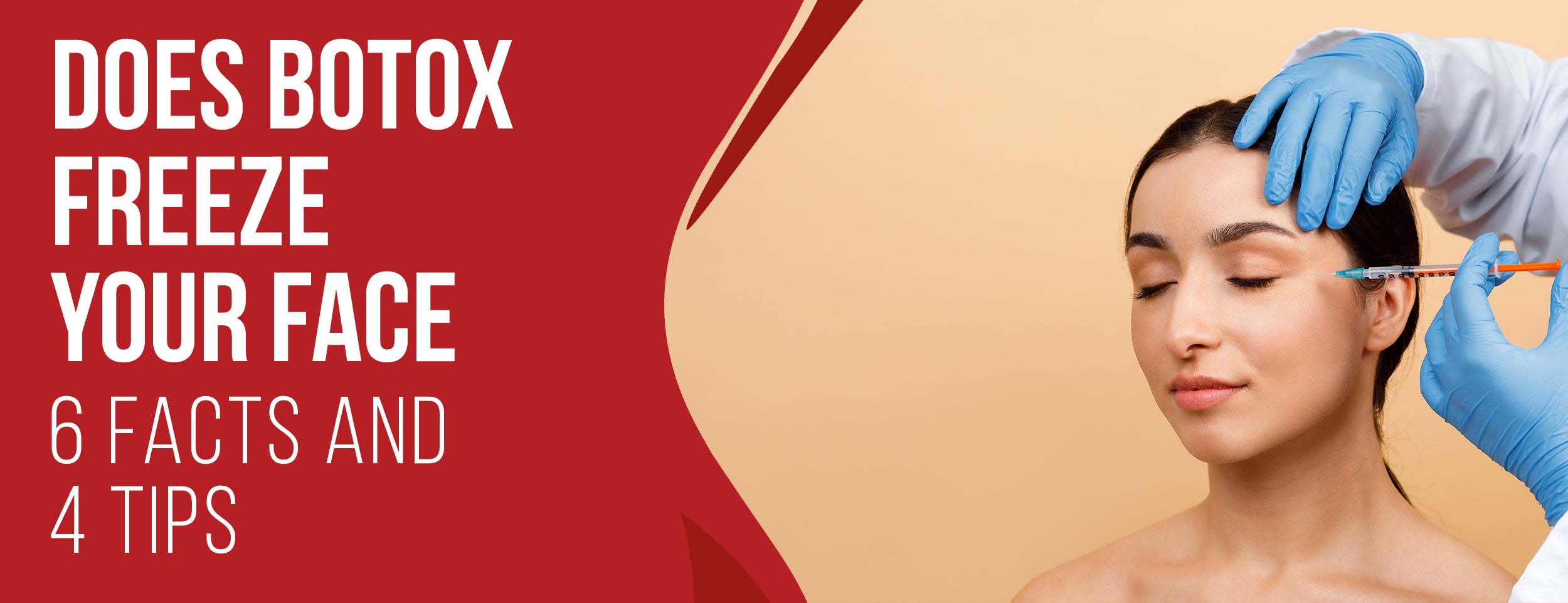Studies have shown that Botox injections lead to a significant reduction in urinary incontinence and an overall improvement in the quality of life.
A possible side effect of this medication includes generalized weakness, dysphagia, diplopia, and blurred vision, just to name a few.
Patients have reported improved bladder control up to six months after receiving the injection, making it a convenient treatment option. Moreover, the long-term effect of Botox on the bladder means that patients don't need to rely on other treatments, such as medications.
In this blog post, we'll explore the long-term impacts of Botox on the bladder, how it works, factors that may affect its effectiveness, possible side effects, and follow-up care. So, if you're curious about this treatment option, keep reading to learn more.
Long-Term Effects of Botox on Bladder: Positive Impact

Botox is highly effective in relieving and enhancing bladder control issues. It specifically targets the underlying muscle activity causing bladder contractions, leading to lasting benefits that significantly impact daily life. This section explores Botox injections' profound and lasting effects on bladder function.
Prolonged Enhancement of Bladder Control
Botox injections profoundly affect the detrusor muscle, crucial in bladder contractions. This intervention had the following lasting effects:
- Sustained Relaxation: Botox's ability to induce muscle relaxation endures over time, reducing spasms and involuntary contractions.
- Amplified Bladder Capacity: The expanded bladder capacity achieved through Botox treatment persists, allowing for more extended periods between urges and voiding.
Continual Reduction in Urinary Incontinence
Botox treatment offers a lasting reduction in urinary incontinence, a distressing condition that affects numerous individuals. Experience relief and improve your quality of life with this effective solution.
- Consistent Leak Prevention: Botox effectively curbs the involuntary leakage of urine, ensuring a sustained decrease in accidents.
- Steady Control: Individuals experience a heightened ability to control urinary urges over the long term, contributing to a more predictable and manageable routine.

Fostering an Improved Quality of Life
Botox injections in the bladder extend their influence beyond physiological enhancements, ultimately contributing to a profound enhancement of overall well-being.
- Social and Psychological Flourishing: Long-term relief from the constraints of bladder issues empowers individuals to engage confidently in social activities, fostering a sense of normalcy and inclusion.
- Emotional Well-being: Alleviating the emotional burden often accompanying bladder problems persists, promoting mental health and self-assurance.
Navigating the Path Forward
While the future implications of Botox on the bladder show promise, it is crucial to take various factors into account:
- Individual Variability: Responses to treatment can vary; consulting a medical professional helps set realistic expectations.
- Follow-up Care: Periodic consultations ensure optimal effects and address emerging concerns.
- Holistic Approach: Integrating healthy lifestyle choices can complement and extend the positive outcomes of Botox treatment.
Long-Term Effects of Botox on Bladder: How Botox Works

Botox's transformative impact on bladder function is rooted in its intricate mechanism of action. This section delves into the underlying science that drives the efficacy of Botox injections in managing bladder-related issues. By understanding its mode of operation and comparing it to other treatments, we gain valuable insights into the sustained benefits of this innovative approach.
The Mechanism of Action For Botox Injections
Botox, short for Botulinum toxin, is a neurotoxic protein with remarkable therapeutic effects when used in controlled doses. Its mechanism of action within the bladder involves a series of precise steps:
- Targeting Nerve Signals: Botox interferes with nerve signals that prompt the detrusor muscle (responsible for bladder contractions) to contract involuntarily.
- Muscle Relaxation: By inhibiting the release of neurotransmitters that facilitate muscle contractions, Botox induces a state of relaxation in the detrusor muscle.
- Bladder Calming: The reduced muscle activity translates to a calm and expanded bladder, minimizing urgency and overactivity.
Improves Bladder Function
Botox injections yield notable improvements in bladder function through their specific impact on muscle behavior:
- Enhanced Storage Capacity: The relaxed detrusor muscle increases the bladder's capacity to hold urine, allowing for extended periods between voiding.
- Reduced Spasms: Inhibiting muscle contractions translates to fewer spasms, minimizing unexpected urination urges.
- Optimized Voiding Control: Botox treatment enables individuals to exert greater control over when and how they void, contributing to an improved sense of normalcy.

Comparison to Other Bladder Control Treatments
When considering the range of treatments available for bladder control issues, Botox injections stand out in several ways:
- Specificity: Botox targets the detrusor muscle, offering localized relief with fewer systemic effects.
- Duration of Effect: Compared to some medications, the effects of Botox are notably longer-lasting, requiring fewer frequent interventions.
- Minimally Invasive: Injections of Botox are typically well-tolerated compared to more invasive surgical procedures.
Botox Effects on Bladder: Factors
While Botox injections in the bladder have promising long-term effects, it's essential to recognize that various factors can influence individual outcomes. Understanding these elements provides a comprehensive perspective on the potential variations in response to treatment. We explore the key factors that can impact the longevity and effectiveness of Botox treatment for bladder-related concerns.
Dosage and Frequency of Injections

Acetylcholine, a neurotransmitter, signals the bladder muscles to contract involuntarily. By relaxing the muscles, Botox can decrease urination's urgency, frequency, and leakage. Botox injection's ideal dose and schedule for bladder conditions are still being studied and vary among patients.
- The dose can range from 100 to 300 units, depending on the size and activity of the bladder.
- The injections are usually given every 3 to 6 months, sometimes up to a year.
Factors influencing Botox dosage and frequency include symptom severity, past response, side effect risk, and treatment cost/convenience. While some may need higher dosages or more frequent injections, others may develop tolerance or experience diminishing returns. Choose a qualified urologist/urogynecologist for a personalized regimen.
The Underlying Medical Conditions
Botox injections in the bladder are not suitable for everyone, especially those with medical conditions that could increase their risk of adverse effects or interfere with the treatment. Some of the conditions that may make Botox less effective or more risky include:
- Active or past urinary tract infections (UTIs) can worsen or spread by the injection.
- Neurological disorders that affect the bladder or muscles include spinal cord injury, multiple sclerosis (MS), Parkinson's disease, or myasthenia gravis.
- Chronic pelvic pain or inflammation may indicate IC or other conditions that need different treatments.
- Allergies or sensitivities to botulinum toxin or its ingredients, such as albumin or sodium chloride.
Before you undergo Botox injections for your bladder, your doctor may want to do some tests or ask questions to rule out or manage any underlying medical conditions that may affect your prognosis or safety.
Age and Sex

Age and sex are two demographic factors that may also impact the long-term results of Botox in the bladder. While Botox can work for both men and women of different ages, some differences in the anatomy and physiology of the urinary system may affect the responsiveness and durability of the treatment. For example:
- Men's greater bladder size and density may necessitate higher Botox doses or additional injections for comparable results. Factors such as prostate enlargement or urethral strictures may increase the likelihood of urinary retention or blockage.
- Women may have more complex pelvic floor muscles than men, interacting with the bladder in multiple ways. Changes in hormonal levels and vaginal tissues can impact symptoms and treatments of bladder conditions. Pregnant or breastfeeding women should avoid Botox injections to prevent fetal harm.
Age is a factor that can influence health and well-being, as well as the likelihood of developing certain bladder conditions. For example:
- Elderly people may have weaker immune systems, reduced muscle tone, and more medical comorbidities that can affect their ability to tolerate or benefit from Botox injections. Older women may also be more prone to urinary tract infections, which Botox can exacerbate.
- Younger people may have more active lifestyles, higher expectations, and different goals than older people, which may influence their decision to undergo Botox for bladder conditions. Younger women may also be more likely to have IC or other chronic pain conditions, requiring specific treatments and management strategies.

Botox Long-Term Effects on Bladder: Possible Side Effects
A botox injection into the bladder can offer substantial long-term benefits. Side effects should be considered in the treatment. Understanding these side effects provides a comprehensive perspective for making informed decisions about their health. We explore the possible side effects of Botox for bladder issues.
Temporary Discomfort During Injection
The injection process itself can sometimes lead to temporary discomfort, which typically subsides shortly after the procedure:
- Injection Sensation: Individuals might experience a brief stinging or pinching sensation at the injection site.
- Localized Discomfort: Mild discomfort or a sensation of pressure might occur due to the introduction of the needle.
Risk of Urinary Retention

One of the potential side effects of Botox injections in the bladder is the risk of bladder retention:
- Temporary Condition: Urinary retention, if it occurs, is usually temporary and often resolves within a few weeks.
- Management: Healthcare providers closely monitor patients after the procedure and might recommend interventions to alleviate this condition if it arises.
Rare but Serious Reactions
While rare, severe reactions to Botox injections in the bladder can occur, necessitating immediate medical attention:
- Allergic Reactions: Individuals might experience allergic reactions such as itching, hives, or difficulty breathing.
- Spread of Toxin: There's a remote possibility that it could spread beyond the injection site, potentially causing symptoms related to muscle weakness or difficulty swallowing.
Mitigating Risk
To minimize the occurrence of side effects and manage them effectively, collaboration with healthcare professionals is essential:
- Informed Consent: Before the procedure, healthcare providers will discuss potential side effects, enabling individuals to provide informed consent.
- Expert Administration: Botox injections should be administered by skilled healthcare professionals experienced in the procedure.
- Open Communication: Any concerns or side effects should be promptly communicated to healthcare providers to ensure timely management.
Botox long-term effects: Follow-up and care
When considering Botox as a treatment option for bladder issues, it's essential to understand the follow-up and care required after the injection. This will help ensure you get the best outcomes and minimize potential risks. Here are some key points to keep in mind:
Monitoring Bladder Function After Injection

- After receiving a Botox injection for your bladder, you must have regular check-ins with your healthcare provider to monitor your bladder's functions.
- This may involve measuring your urine volume, frequency, and leakage amounts and assessing any bladder sensation or discomfort changes.
- Your provider may also recommend regular bladder ultrasound or urodynamics testing to evaluate your bladder function more thoroughly.
- Monitoring your bladder function will help determine the effectiveness of the Botox injection and whether any adjustments or additional treatment may be needed.
Lifestyle Changes for Optimal Results
- Despite Botox's effectiveness in treating bladder issues, you can also make lifestyle changes to support optimal results.
- Good hydration is essential to keep your bladder healthy and functioning correctly. Drink 8-10 glasses of water every day.
- Bladder training exercises can also help improve bladder control and reduce the frequency of urge incontinence episodes.
- A diet free of caffeine, alcohol, and spicy foods may also help reduce symptoms and maximize the benefits of Botox treatment.

Potential need for further treatment
- While Botox can provide significant relief for some people with bladder issues, it's not a permanent solution for everyone.
- Based on your situation, you may need to receive additional Botox injections or explore other treatment options over time.
- Your healthcare provider will work with you to determine the most appropriate ongoing treatment plan for your symptoms and medical history.
Conclusion
The condition of urinary incontinence can cripple many people's quality of life. Fortunately, Botox in bladder injections is a safe and effective treatment option that offers long-lasting relief. The mechanism of action works by targeting the nerves that control the bladder, reducing overactivity and promoting better bladder control.
Although there are some possible side effects to consider, they are generally mild and temporary. If you're struggling with bladder control issues, talk to your doctor about whether Botox in bladder injections may be right for you. Don't let urinary incontinence hold you back any longer. Take control of your bladder health with Botox.














